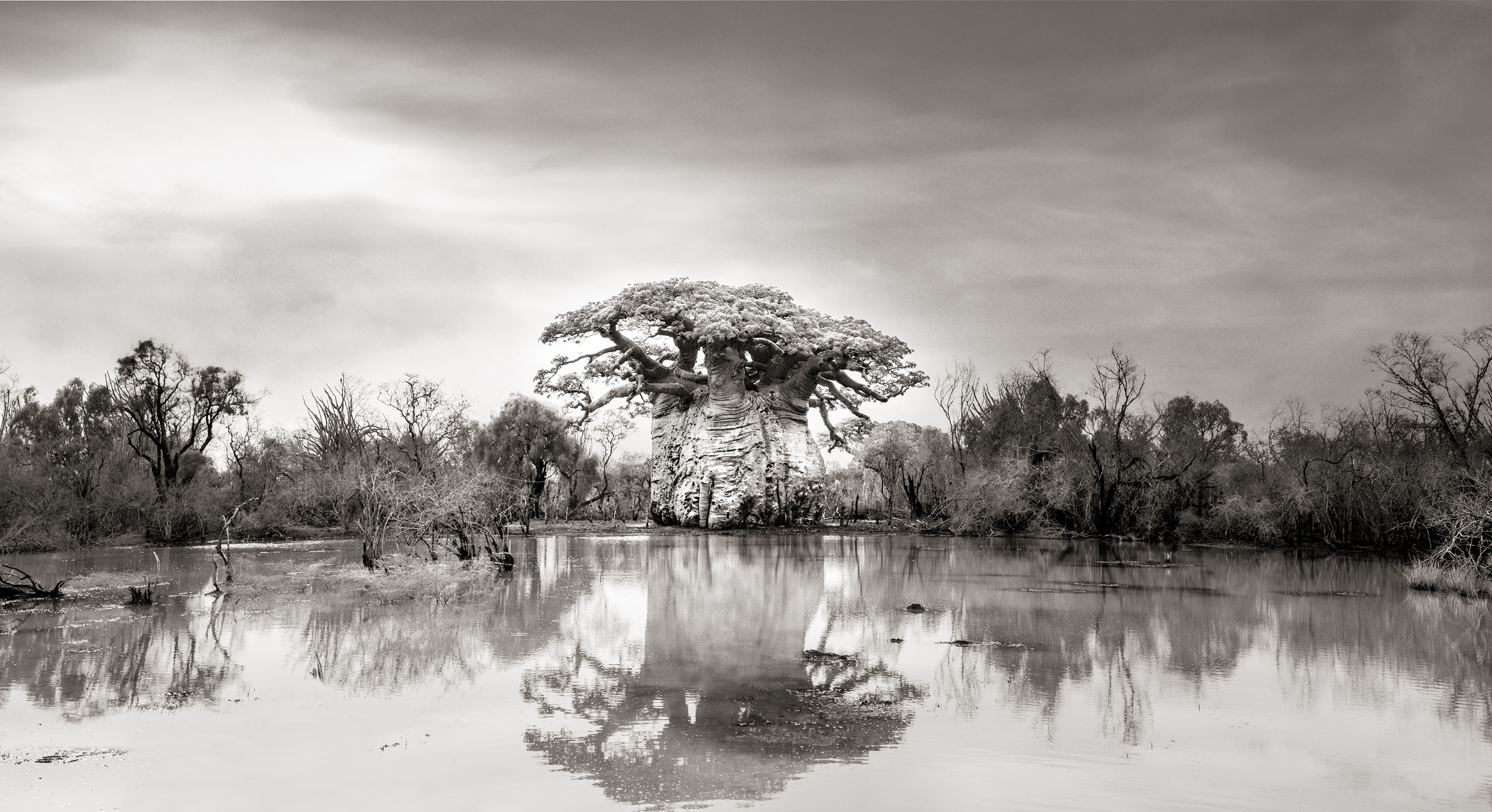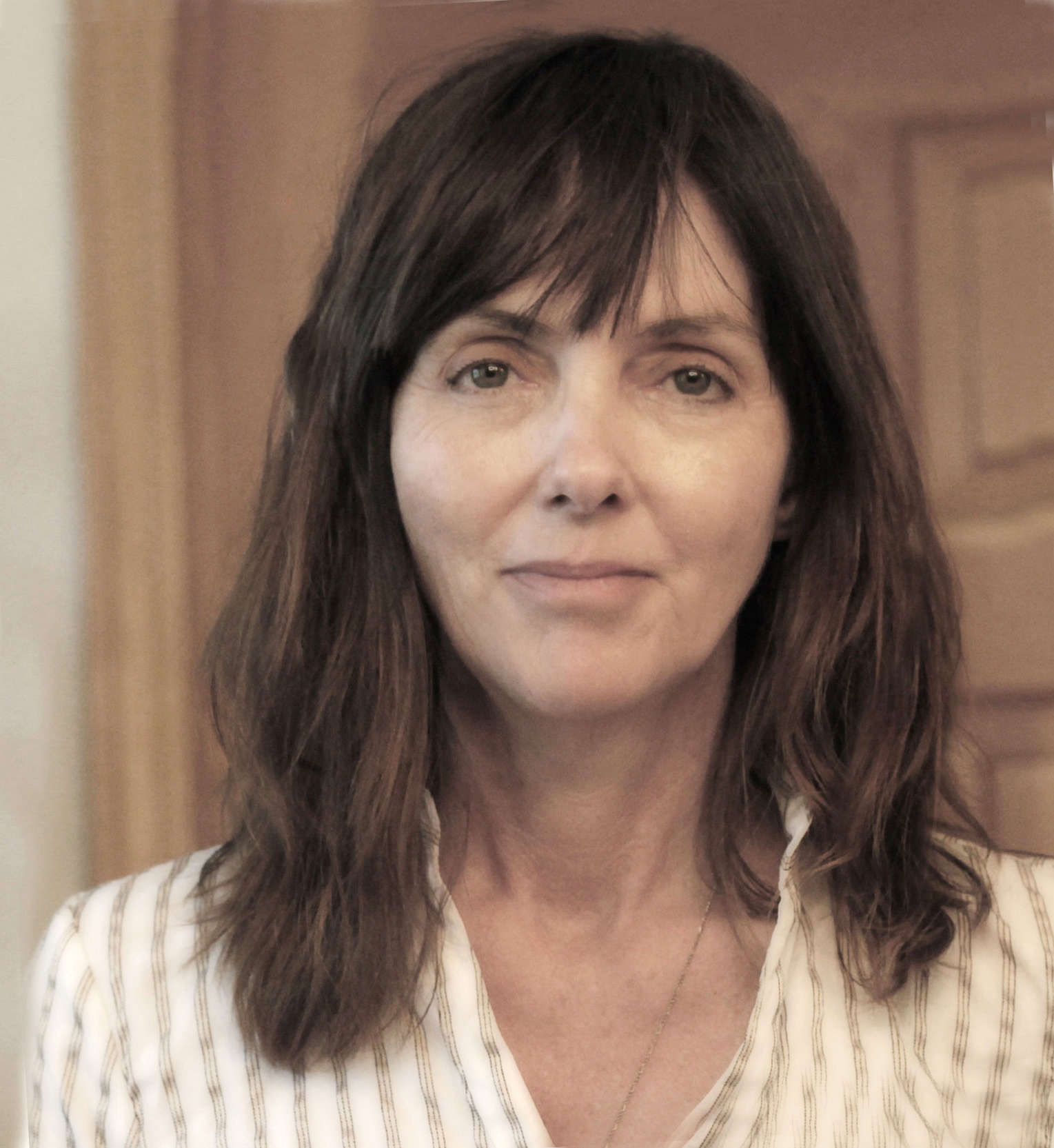CHOOSE AN IMAGE BELOW TO VEIW IN THE EXHIBITION

I am on a pilgramage to visit a tree.
° ° °
° ° °

BETH MOON
![]()

Close This View
(this button won't be shown on published site)
Portfolio is empty
LIST OF PLATES
Portfolio is empty
Upload Images

BAOBAB
Photographs by Beth Moon.
Contribution by Adrian Patrut.
Abbeville Press, Jackson, 2021. In English. 128 pp., 15x10".
| PURCHASE | Hardbound [Signed] $59.95 |
°°°
Baobabs are one of Africa’s natural wonders: they can live more than 2,500 years, and their massive, water-storing trunks can grow to more than one hundred feet in circumference. They also serve as a renewable source of food, fiber, and fuel, as well as a focus of spiritual life. But now, suddenly, the largest baobabs are dying off , literally collapsing under their own weight. Scientists believe these ancient giants are being dehydrated by drought and higher temperatures, likely the result of climate change.
Photographer Beth Moon, already responsible for some of the most indelible images of Africa’s oldest and largest baobabs, has undertaken a new photographic pilgrimage to bear witness to this environmental catastrophe and document the baobabs that still survive. In this oversize volume, she presents breathtaking new duotone tree portraits of the baobabs of Madagascar, Senegal, and South Africa. She also recounts her eventful journey to visit these fantastic trees in a moving diaristic text studded with color travel photos.
Baobab is not only a compelling photo book and travel narrative, but also a timely ecological warning.
Photographer Beth Moon, already responsible for some of the most indelible images of Africa’s oldest and largest baobabs, has undertaken a new photographic pilgrimage to bear witness to this environmental catastrophe and document the baobabs that still survive. In this oversize volume, she presents breathtaking new duotone tree portraits of the baobabs of Madagascar, Senegal, and South Africa. She also recounts her eventful journey to visit these fantastic trees in a moving diaristic text studded with color travel photos.
Baobab is not only a compelling photo book and travel narrative, but also a timely ecological warning.
PURCHASE PRINTS
Breathtaking new tree portraits of the baobabs of Madagascar, Senegal, and South Africa.
Breathtaking new tree portraits of the baobabs of Madagascar, Senegal, and South Africa.

° ° °
PLATINUM and ARCHIVAL PIGMENT prints are both available in limited editions. View print information by clicking the "INFO" button below the image in the exhbition.

Thanks for Viewing the Exhibition
| ORDER THE BOOK | ||
| INQUIRE ABOUT PRINTS | ||
| VIEW THE EXHIBITION AGAIN |
 gallery@phototeye.com | (505) 988-5152 x 202
gallery@phototeye.com | (505) 988-5152 x 202IMAGES © BETH MOON, 2022 . ALL RIGHTS RESERVED.
On November 3, 2018, I receive an email from Professor Adrian Patrut telling me that he has received news from Madagascar.
He writes, "The Tsitakakoike baobab, the biggest sacred baobab, split and toppled several days ago…."
I make a reservation to travel to Madagascar to visit the Tsitakakoike tree and say goodbye. Adrian has urged me to visit quickly. What remains of the tree is sure to fall soon. There is no way to predict how long it will take….
I fly from New York to London, London to Nairobi, and then from Nairobi to Antananarivo, Madagascar….
He writes, "The Tsitakakoike baobab, the biggest sacred baobab, split and toppled several days ago…."
I make a reservation to travel to Madagascar to visit the Tsitakakoike tree and say goodbye. Adrian has urged me to visit quickly. What remains of the tree is sure to fall soon. There is no way to predict how long it will take….
I fly from New York to London, London to Nairobi, and then from Nairobi to Antananarivo, Madagascar….
° ° °
I am on a pilgrimage to visit a tree.
° ° °
Five days after leaving New York, I arrive at my destination, a small, sleepy coastal village rarely visited by foreigners. Morombe is a Malagasy word that means “vast beach.”
We drive an hour south on wide roads, stopping in the small village of Isosa. Here we enlist the help of two local men with intimate knowledge of the forest to help guide us to the dying tree….
° ° °
Travel is slow over the winding, rock-strewn road. As we approach water-filled gullies, the men walk ahead to test the depth of the water and direct the driver. One area, as we’re entering the forest, is particularly deep.
The four-by-four sinks into the mud with wheels spinning....
The four-by-four sinks into the mud with wheels spinning....
° ° °
Astonishment and horror set in as Tsitakakoike comes into view. Half of the tree has collapsed; a portion of the sides and back of the trunk remain. Gigantic branches, larger than most trees, lay in disarray at the base of the trunk.
Exposed roots signify drought; the rains have come too late. It will take a few weeks, maybe a month before the tree collapses entirely.
Exposed roots signify drought; the rains have come too late. It will take a few weeks, maybe a month before the tree collapses entirely.
° ° °
Steeped in a deeply rooted ancestral religion mixed with animist beliefs, the local tribe, the Masikoro, believe that the spirits of their ancestors reside in Tsitakakoike.
The tree has a concentration of sacred power…
Leong explains to me that, before I can take pictures of the tree, the chief must get permission from the elders. The chief functions as an intermediary between the people of the tribe and the spirits in the tree, who, it is believed, require incentive or rewards in exchange for their assistance. We have brought gifts: a bottle of rum and a bag of loose-leaf tobacco….
The tree has a concentration of sacred power…
Leong explains to me that, before I can take pictures of the tree, the chief must get permission from the elders. The chief functions as an intermediary between the people of the tribe and the spirits in the tree, who, it is believed, require incentive or rewards in exchange for their assistance. We have brought gifts: a bottle of rum and a bag of loose-leaf tobacco….
° ° °
Overhead the sky is gray, laden with heavy clouds. I put my camera on a tripod. Behind the tree the cloud cover is lighter. The sun is struggling to burst through. And then, for a brief moment, shards of sunlight penetrate the clouds just enough to illuminate what is left of the crown, creating a golden halo around the tree. I am reminded of paintings from the Middle Ages in which divinity is symbolized by light.
My mind, like the camera, cannot process what I see before me in one frame. Can I begin to understand the tragedy before me, frame by frame, in panoramic proportions?
My mind, like the camera, cannot process what I see before me in one frame. Can I begin to understand the tragedy before me, frame by frame, in panoramic proportions?
° ° °
When Tsitakakoike falls completely, the people of the village will gather under the new sacred tree, Tsitakakansa, whose name means “the tree where one cannot hear the song from the other side.”
Once again, the chief will hold a ceremony, this time to celebrate Tsitakakansa and transfer the ancestral spirits.
Once again, the chief will hold a ceremony, this time to celebrate Tsitakakansa and transfer the ancestral spirits.
° ° °
ABOUT BETH MOON
Time, memory and nature are the central motifs that underlie the photographic imagery of Beth Moon.
Time, memory and nature are the central motifs that underlie the photographic imagery of Beth Moon.

Whether she is recording the majestic, sentinel-like trees for the Portraits of Time series; capturing the lives of ravens at the seaside for the Odin’s Cove series; or rendering menacing carnivorous plants in the Savage Garden portfolio, Moon reveals a magical and intuitive appreciation for the earth, while defining our understanding of man's place in the universe. Moon has gained international recognition for her large-scale, richly toned platinum prints. Since 1999, her work has appeared in more than eighty solo and group exhibitions worldwide, receiving critical acclaim in major fine art publications internationally. Her prints are held in numerous public and private collections, including the Cleveland Museum of Art, the Museum of Fine Arts, Houston, the Museum of Photographic Arts in San Diego, the Louisiana Art & Science Museum, The Citadelle Art Museum and the Museum of Modern and Contemporary Art, Bolzano, Italy.
° ° °

I ask, “Can we go into the forest with a cart pulled by zebu (large African cattle)?”….. I squint to look closer and see there are a few zebu off in the distance.
“Look, Leong! Zebu!” I point. “We must ask these men!”
Soon Leong (the guide) comes back to the car smiling. He has made a new agreement. The men start to prepare the cart for our journey.
“Look, Leong! Zebu!” I point. “We must ask these men!”
Soon Leong (the guide) comes back to the car smiling. He has made a new agreement. The men start to prepare the cart for our journey.
° ° °

It takes thirty-two steps to circle the base, just over ninety feet in circumference.
A golden light illuminates the bark. With my hand on the trunk, I remember my connection to the natural world as a source of power. Mosquitoes are swarming, the heat is extreme, but this is paradise.
A golden light illuminates the bark. With my hand on the trunk, I remember my connection to the natural world as a source of power. Mosquitoes are swarming, the heat is extreme, but this is paradise.
Right here, right now, I am where I am supposed to be.
° ° °
 Beth Moon in a cart pulled by zebu while travelling to visit the Tsitakakoike baobab.
Beth Moon in a cart pulled by zebu while travelling to visit the Tsitakakoike baobab. Passing Baobab XX, Andrombiry Forest, enroute to visit the Tsitakakoike baobab
Passing Baobab XX, Andrombiry Forest, enroute to visit the Tsitakakoike baobab
BAOBAB OF WARANG, 2018
This artwork is available in one print editions:
18 x 27 inches
Platinum print
Edition of 15
$3,800 Unframed
Framing options available; please inquire to learn more.
INFO
Baobab | beth moon
Inquire about this Artwork

